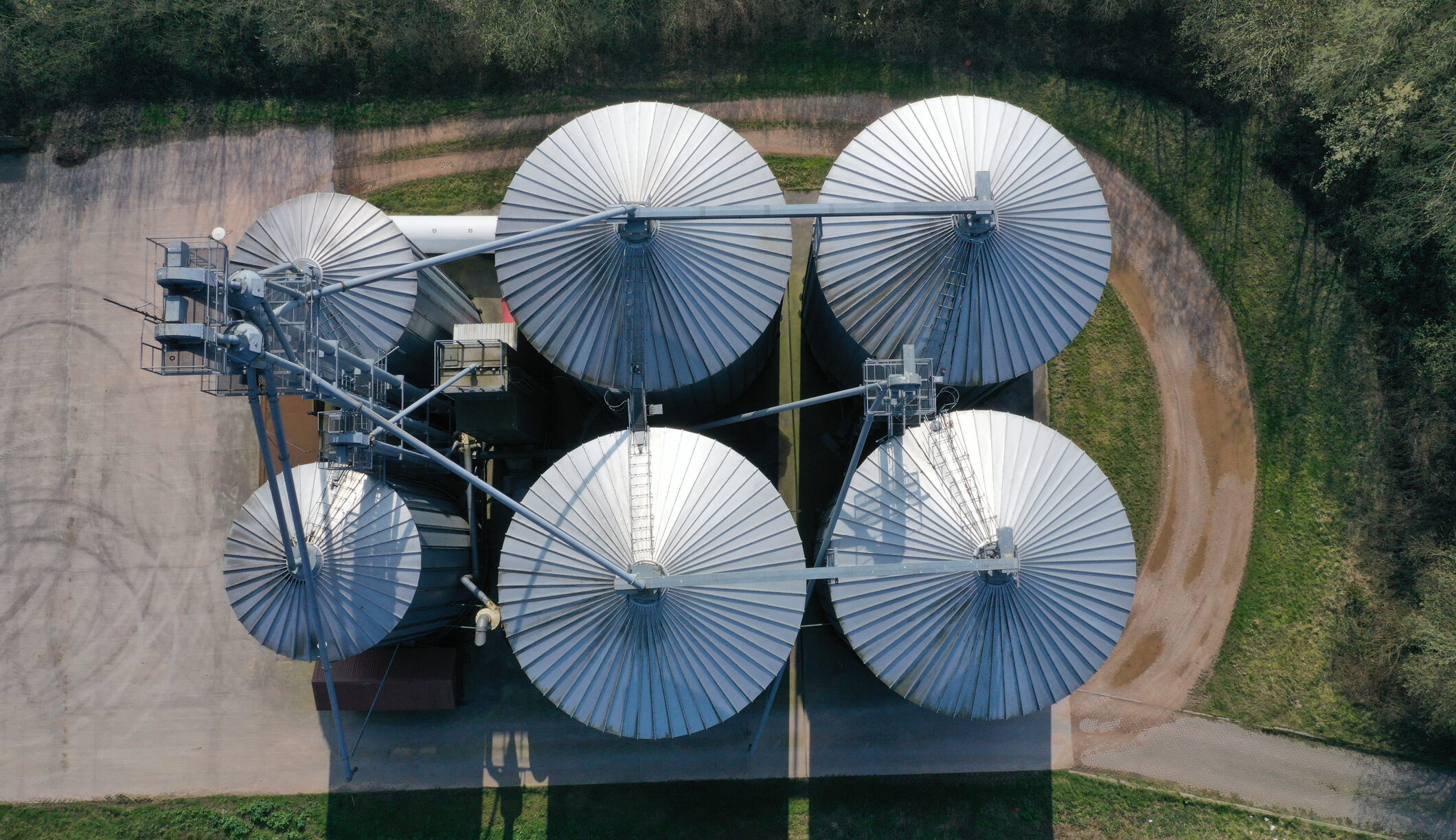Silos are essential for storing bulk material, but the silo roof is often overlooked until problems arise. Protecting the roof structure ensures your silo’s structural integrity and prevents costly repairs.
What is the Role of a Silo Roof?
The silo roof is a crucial component in maintaining the overall functionality and longevity of a silo. Its primary role is to protect the materials stored inside—whether grain, raw materials, or other goods—from external elements, like weather, pests, and debris. A well-designed and maintained roof structure helps prevent issues that can compromise the structural integrity of the silo.
Here are some key roles of a silo roof:
- Weather Protection
- Contamination Prevention
- Structural Support
- Safety Enhancement
- Temperature Regulation
Common Types of Silo Roofs:
- Metal roof: Durable and widely used for grain silos and industrial applications.
- Single membrane cover or double membrane cover: Ideal for flexibility and weatherproofing.
- White roof: Reflects sunlight, reducing heat inside the silo dome.
- Roof-top coating: Protects against corrosion and extends the life of your roof structure.
- Concrete Roof: A standard choice for concrete silos, offering excellent strength.
- Dome Roofs: Popular design for grain and steel silos, providing excellent weight distribution and resistance to wind loads.
- Beam-Supported Roofs: Built with steel beams for added strength and durability.
Issues That Damage Silo Roofs
Silos face numerous challenges that can lead to roof failure or even structural issues.
Here are some common causes of damage:
Environmental factors:
- Extreme weather like storms, snow, or heavy rain.
- UV rays causing wear on roof-top coatings and membranes.
Structural stress:
- Overloading materials against the concrete walls.
- Weak beam pockets or failing steel beams.
Poor maintenance:
- Neglecting silo inspections.
- Failing to repair minor cracks or leaks, which can grow into significant issues.
Ignoring these issues may result in concrete silo failure, contamination of materials, or even structural failure.
Steps to Protect Your Silo Roof
1. Regular Inspections
Routine silo inspections can catch small problems before they turn into big repairs.
Check for:
- Cracks in the concrete structure.
- Rust on steel beams or the metal roof.
- Weak spots on silo domes, small rooms, or the roof structure.
2. Preventive Maintenance
- Cleaning: Remove debris, mold, and dirt regularly.
- Protective coatings: Apply roof-top coatings to prevent corrosion and damage.
- Spray foam insulation: Adds protection against leaks and temperature changes.
3. Professional Repairs
When damage is beyond minor fixes, hire experts for silo repairs.
Services can include:
- Replacing a new roof with durable materials.
- Strengthening beam pockets and central columns for stability.
- Fixing cracks in concrete slabs to avoid further damage.
Best Practices for Long-Term Protection
To avoid costly issues like concrete silo failure, adopt these best practices:
- Preventive maintenance: Regular care extends your silo roof’s lifespan.
- Proper roof maintenance: Follow manufacturer recommendations.
- Use high-quality materials: Invest in high-strength steel, membranes, or coatings during silo construction or upgrades.
- Ensure safety: Check for structural issues after heavy storms or using heavy equipment near the silo.
Considering Professional Help?
DIY solutions work for minor issues, but professional help ensures complete safety and durability.
Professionals can:
- Conduct detailed inspections.
- Provide specialized services like double membrane covers or advanced silo repairs.
- Identify hidden structural issues that could lead to structural failure.
Silo Pros specializes in everything from silo construction to proper roof maintenance, ensuring your silo roof remains in optimal condition.
Don’t wait for problems to arise—schedule a professional silo inspection today to keep your silos performing at their best.

